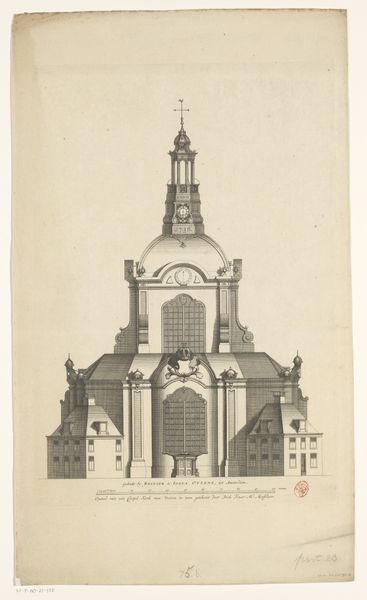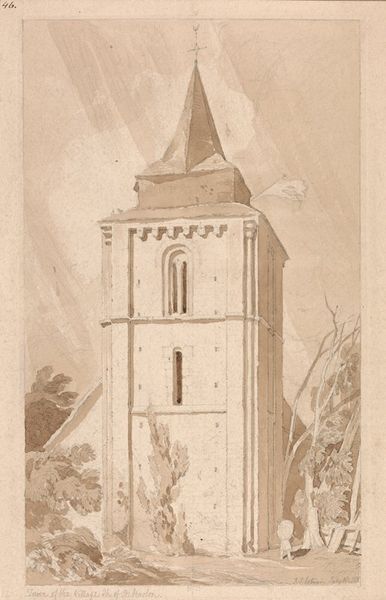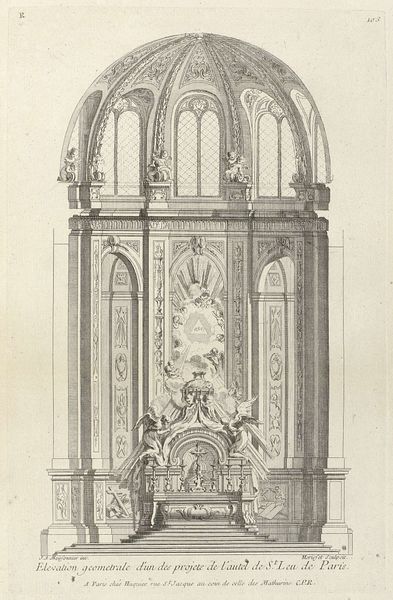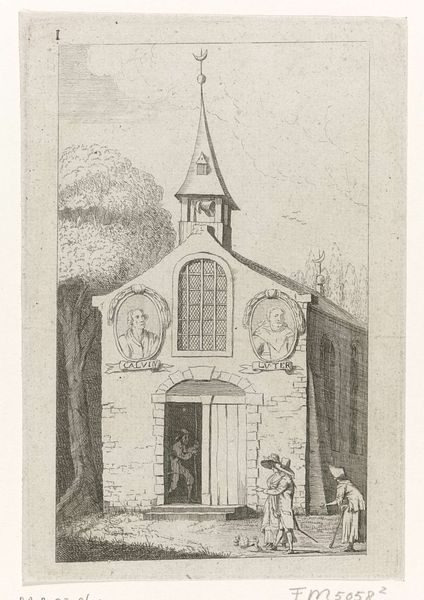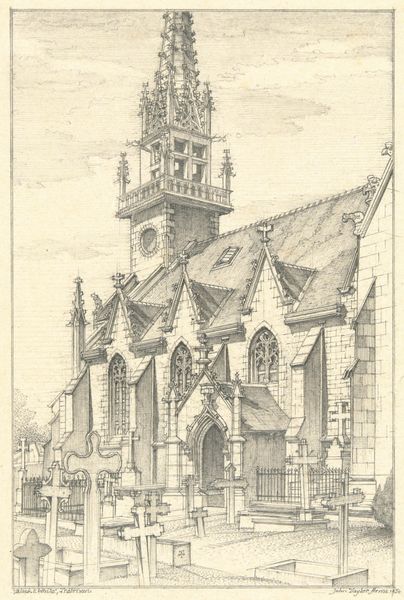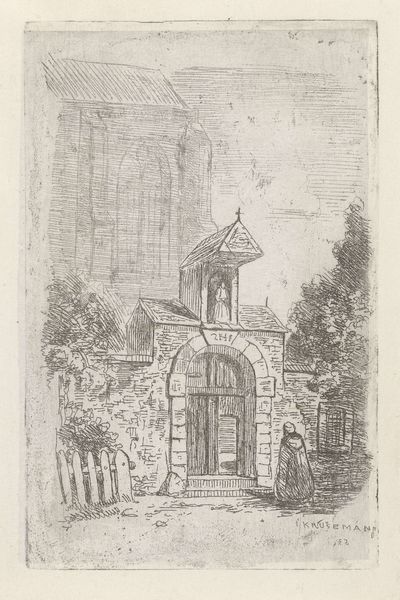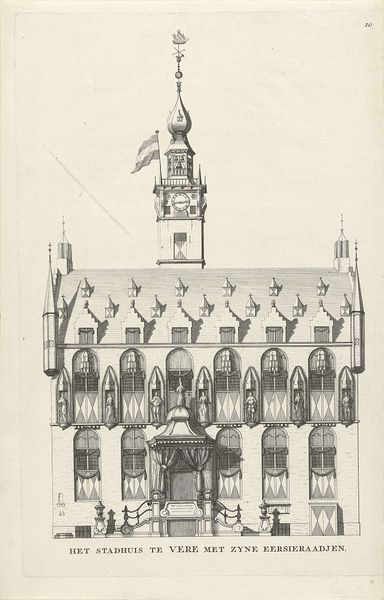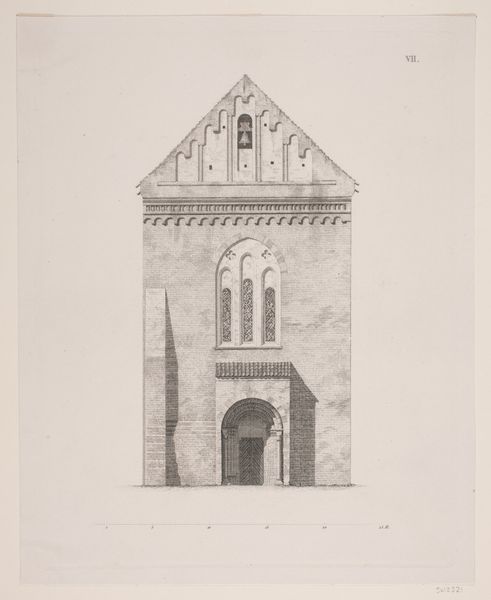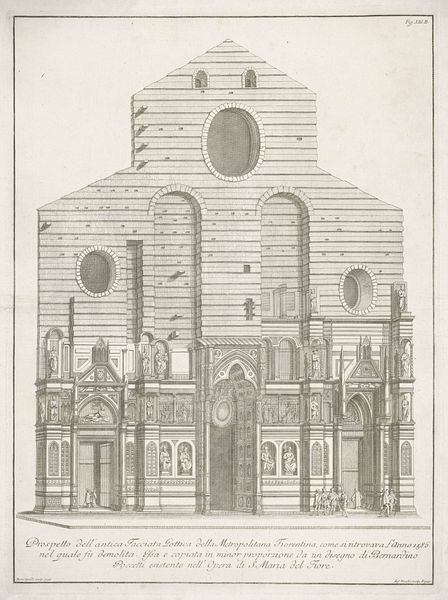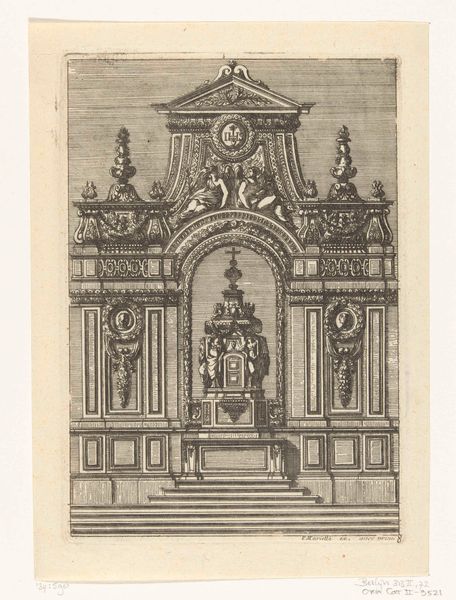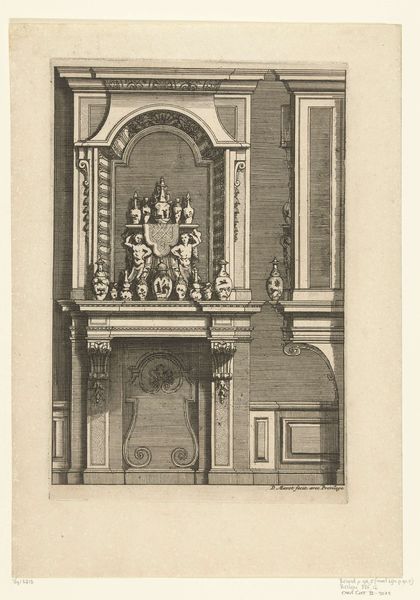
drawing, print, etching, ink, pencil, architecture
#
drawing
#
medieval
# print
#
pen sketch
#
etching
#
pencil sketch
#
landscape
#
ink
#
geometric
#
pencil
#
line
#
architecture
#
realism
Dimensions: height 88 mm, width 62 mm
Copyright: Rijks Museum: Open Domain
Curator: Here we have Cornelis Johan Laarman’s "Gothic Façade with Round Window," an etching likely created between 1854 and 1889. Editor: It’s stark. And that delicate linework! The scene almost breathes with the subtle nuances of light and shadow, emphasizing the density of the architectural structure. Curator: Laarman was quite adept at capturing the intricate details, wouldn't you say? Consider the brickwork; one can almost trace the layering, noting the repetitive, careful craft of its making. What do you make of it being rendered as an etching, a process involving acid and considerable labor? Editor: The choice of etching feels particularly potent. Architecture, especially Gothic, has always represented power structures. Etching, traditionally a reproductive medium, puts this grandeur into wider circulation, allowing commentary and engagement. How complicit or critical was Laarman in distributing these images of power? What does the act of reproduction say? Curator: I see your point about reproduction and power, definitely relevant in a time when printmaking allowed broader consumption of art and architecture imagery. However, let’s not overlook the artist's process. Laarman's labor mirrors, in a way, the stonemasons and artisans who originally constructed these edifices. There is a very tangible connection through work being visualized here. Editor: Absolutely, the echoes of historical labor are key. The very materiality speaks to socio-economic strata! Curator: Considering the precision involved, I find myself admiring the geometric arrangement. Even the trees feel subordinate to the geometry, yet simultaneously enlivening what could have been a sterile scene. Editor: Right, it creates a push and pull. It subtly reminds us about class divides, too. It forces the viewer to question their own place, visually and culturally, relative to the facade that we are viewing in that period. Curator: Indeed, art's social function. Food for thought on the ways we engage with architectural representations even now. Editor: Precisely! Thinking about it more now makes it so relevant in today’s discussions about the past and present. Thank you for making me reflect more on the cultural weight and historical echo it holds.
Comments
No comments
Be the first to comment and join the conversation on the ultimate creative platform.


